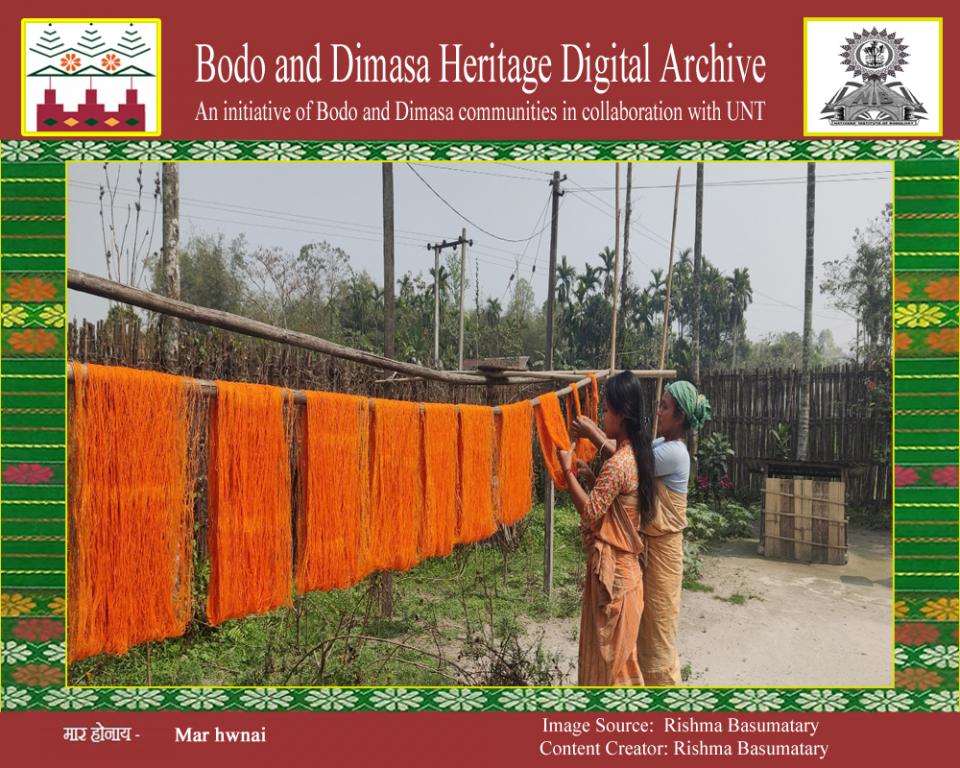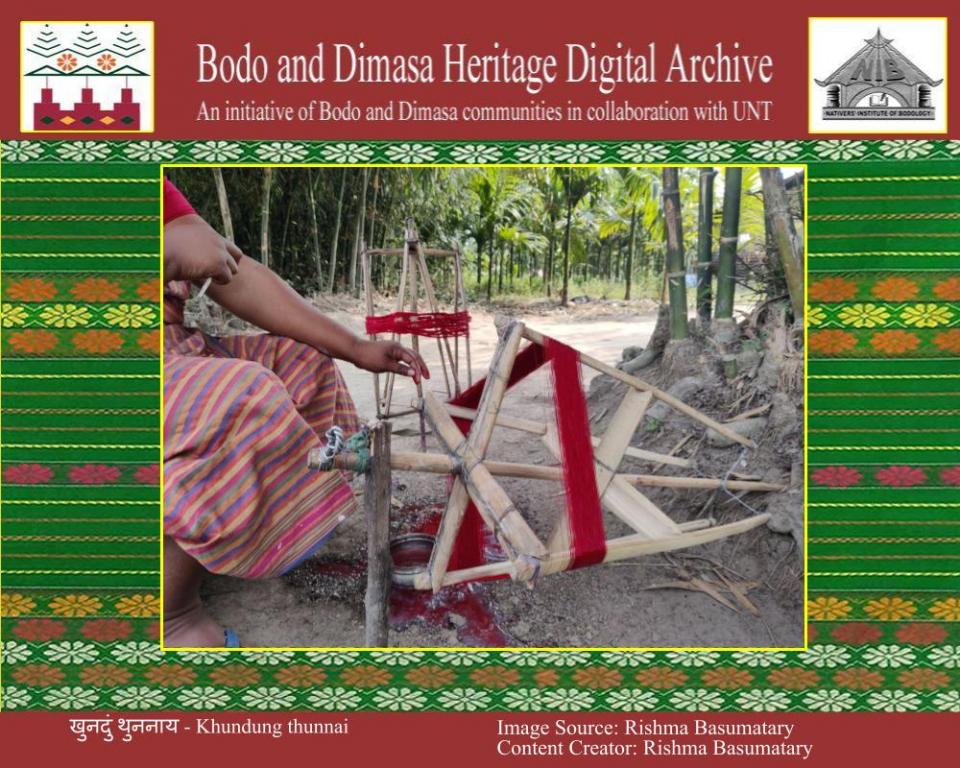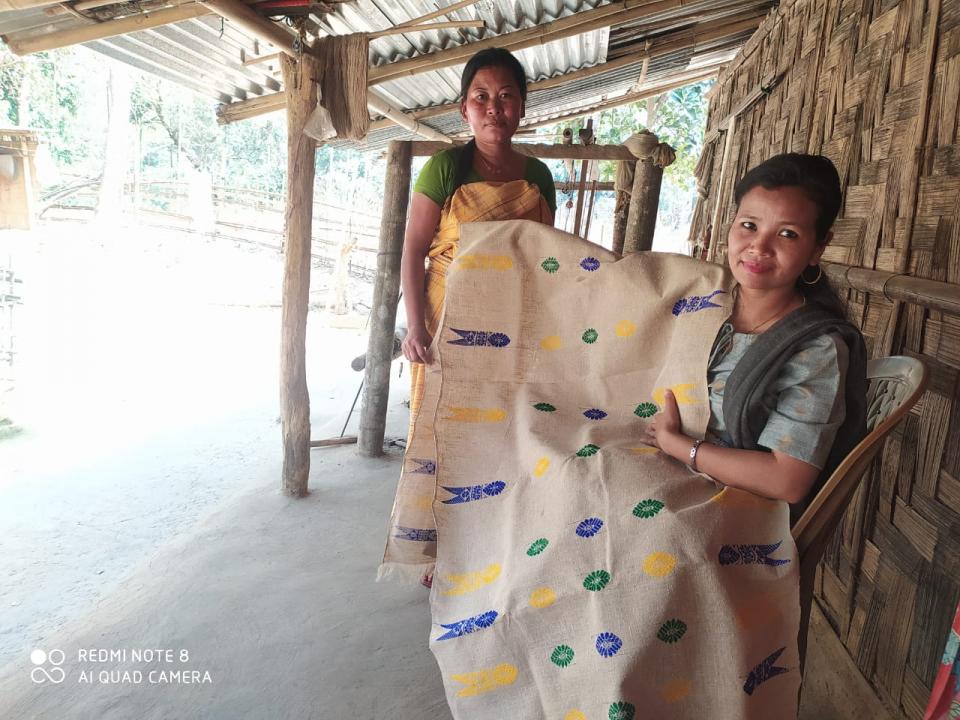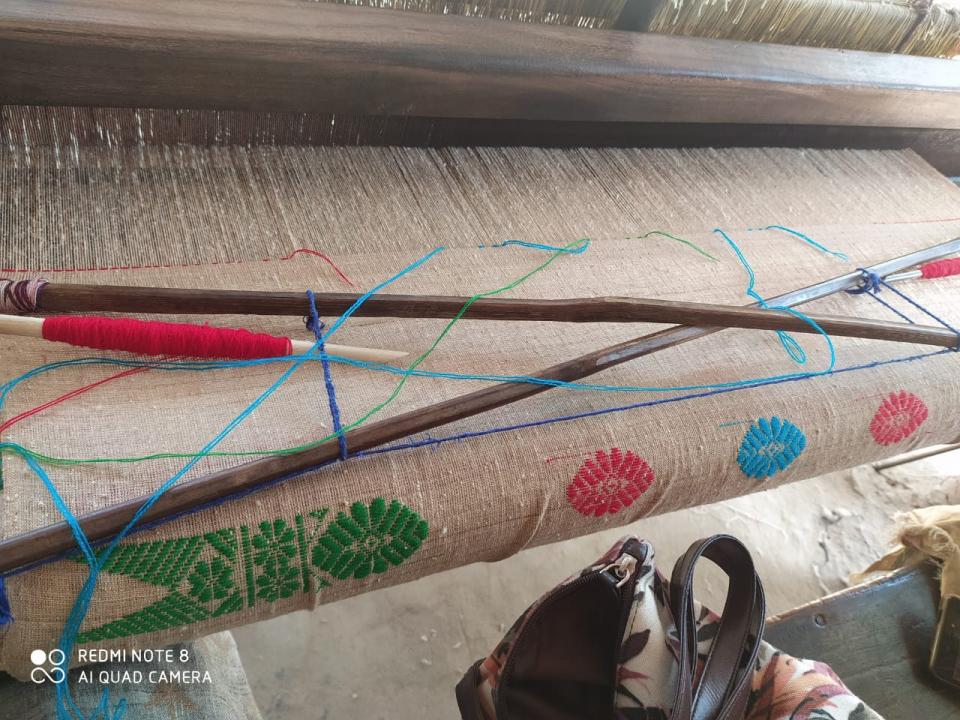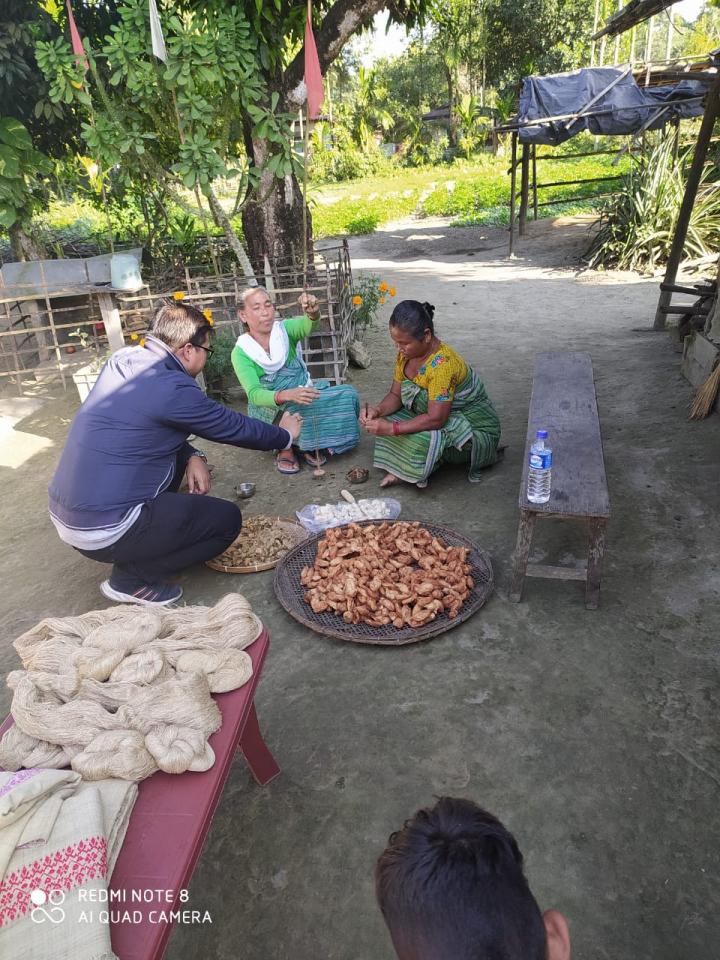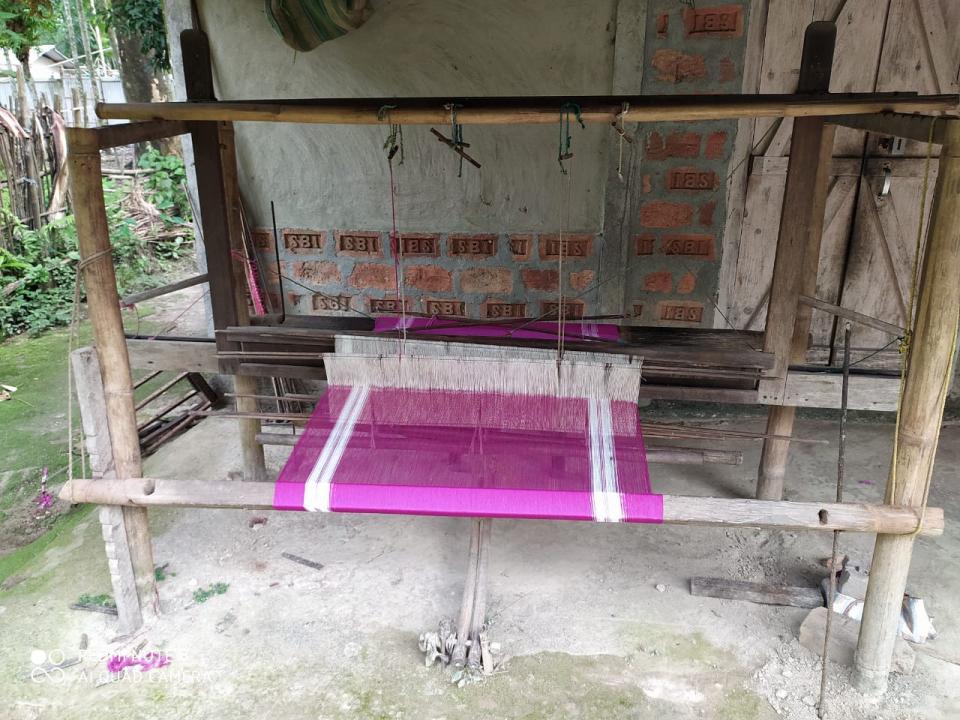Browse Digital Heritage
Digital Heritage
Community
बर' BodoCategory
People, Dress and Ornaments, Tools and Instruments, Traditional PracticesSummary
The Bodo weavers used throw shuttle and fly shuttle looms. The shuttle makhu is thrown across the shed by the hand. The loom is fitted to a vertical post made of bamboo or wood and it is fixed to the ground.Digital Heritage
Community
बर' BodoCategory
Flora and Fauna, Dress and Ornaments, Tools and Instruments, Traditional PracticesSummary
'Indi Phitwb'- the eri cocoon are open-mouthed, as the silk filament is not wrapped as in mulberry, muga and tassar. Hence, the eri cocoons cannot be reeled but spun like cotton. The shape, size and color of the endi cocoon vary on the host plant leaves.Digital Heritage
Community
बर' BodoCategory
Dress and Ornaments, Tools and Instruments, Traditional PracticesSummary
Starching is the process where yarn/thread produced is wound on a spool to make a wrap. In order to make the thread stronger it is boiled with rice or flour and water. The yarn or wrap is taken out from the water and dried up in the sun. Digital Heritage
Community
बर' BodoCategory
Dress and Ornaments, Tools and Instruments, Traditional PracticesDigital Heritage
Community
बर' BodoCategory
Dress and Ornaments, Tools and Instruments, Traditional PracticesDigital Heritage
Community
बर' BodoCategory
Dress and Ornaments, Tools and Instruments, Traditional PracticesSummary
The hand-woven mulberry silk fabric is very popular among the Bodo womenfolk and used in weddings and ceremonies. They create different designs of their liking on it and there are different qualities. The best qualities are in great demand.Digital Heritage
Community
बर' BodoCategory
Dress and Ornaments, Tools and Instruments, Traditional PracticesSummary
Indi shawl, made from mulberry silk, is very popular among the Bodos & used in winter and special occasions. It is traditionally prepared with the help of handloom. Although readymade shawls are also imported, a Bodo woman would prefer the local made one.Digital Heritage
Community
बर' BodoCategory
Dress and Ornaments, Tools and Instruments, Traditional PracticesSummary
Preparation of thread from silkworm is one of the main economic activities of womenfolk. The cocoon is first processed in boiling water and then the thread is reeled with the help of a simple tool called "thaukhri".Digital Heritage
Community
बर' BodoCategory
Dress and Ornaments, Tools and Instruments, Traditional PracticesSummary
Gamsa, worn around the waist, is the traditional dress used by the Bodo menfolk. It is woven using the 'Sal Khuntha' four pillars and the 'Tat sal' or handloom. This is the main dress used by a menfolk whenever they are at home and in the field.Digital Heritage
Community
बर' BodoCategory
Flora and Fauna, Dress and Ornaments, Tools and Instruments, Traditional PracticesSummary
The most important appliance used for spinning eri cocoons is the drop spindle (Thaokhri/takuri). It is a simple device made of bamboo; a cylindrical stick tapering towards one end, and a disc-like structure is embedded towards the other end.Digital Heritage
Community
बर' BodoCategory
Dress and Ornaments, Tools and Instruments, Traditional PracticesSummary
Warping is an important step in the manufacture of clothes. Warping in local term is called si swngnai and the villagers followed the simple stick warping method. Digital Heritage
Community
बर' BodoCategory
Dress and Ornaments, Tools and Instruments, Traditional PracticesSummary
Swrkhi is a spinning tool made of bamboo. It is used for winding threads and to hold sorted threads before setting the loom for weaving. It is used in Boro traditional weaving practices.


